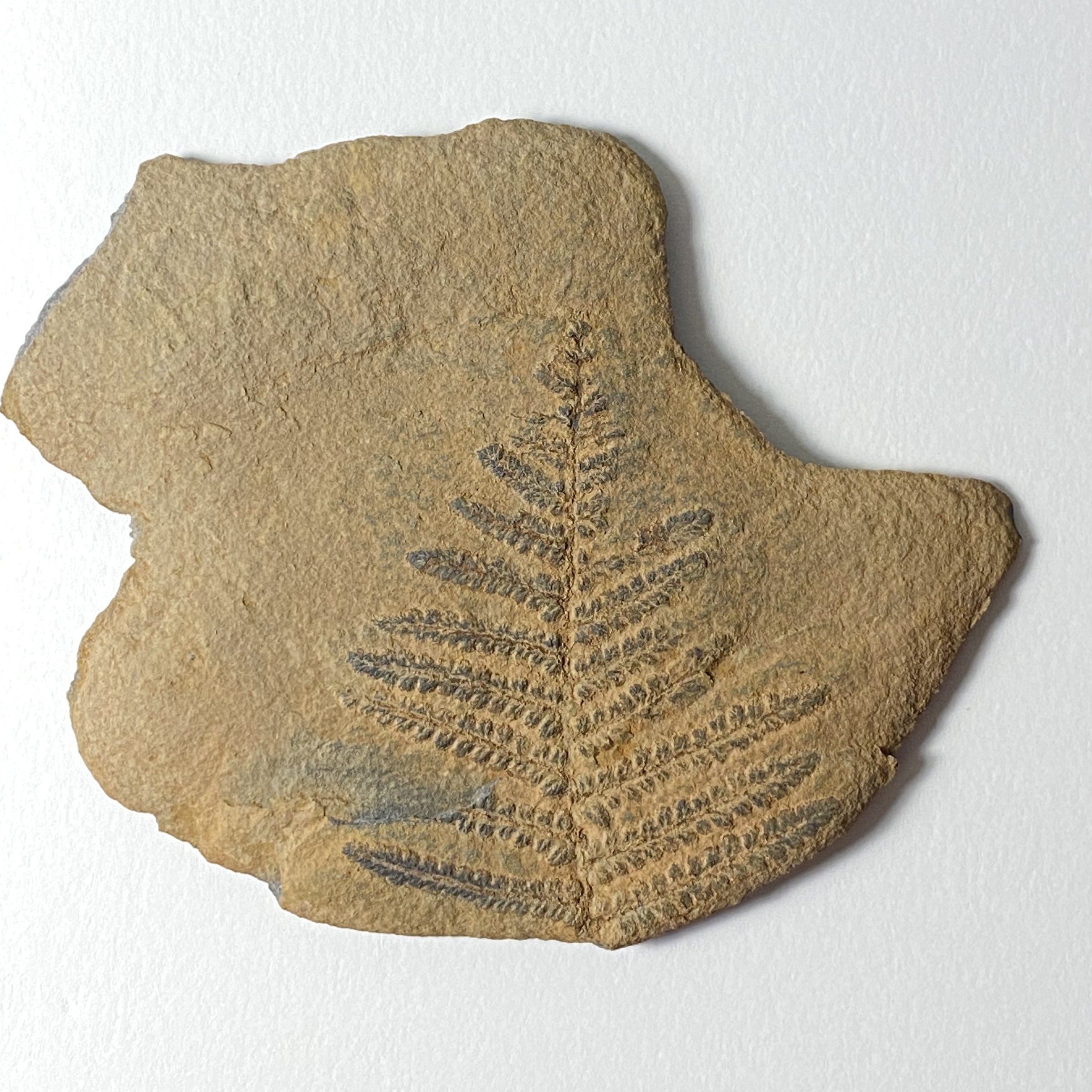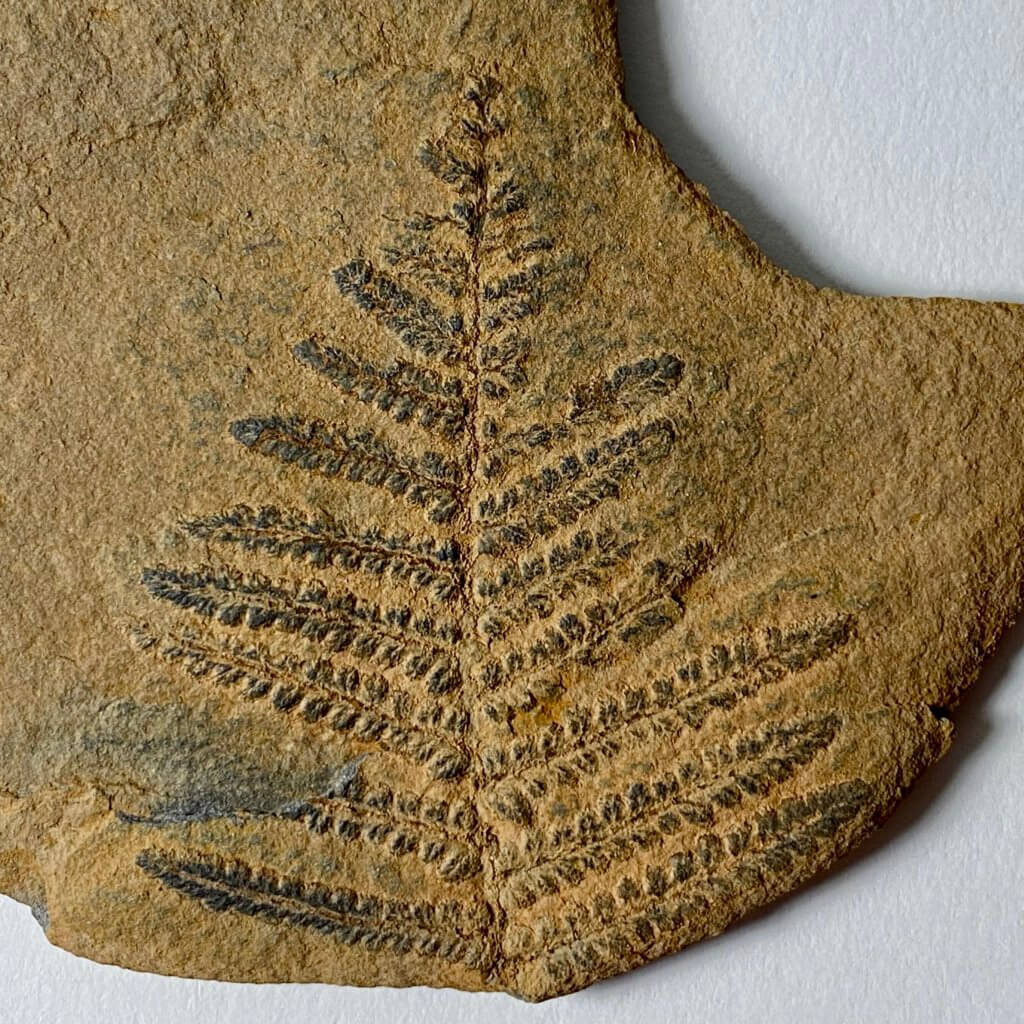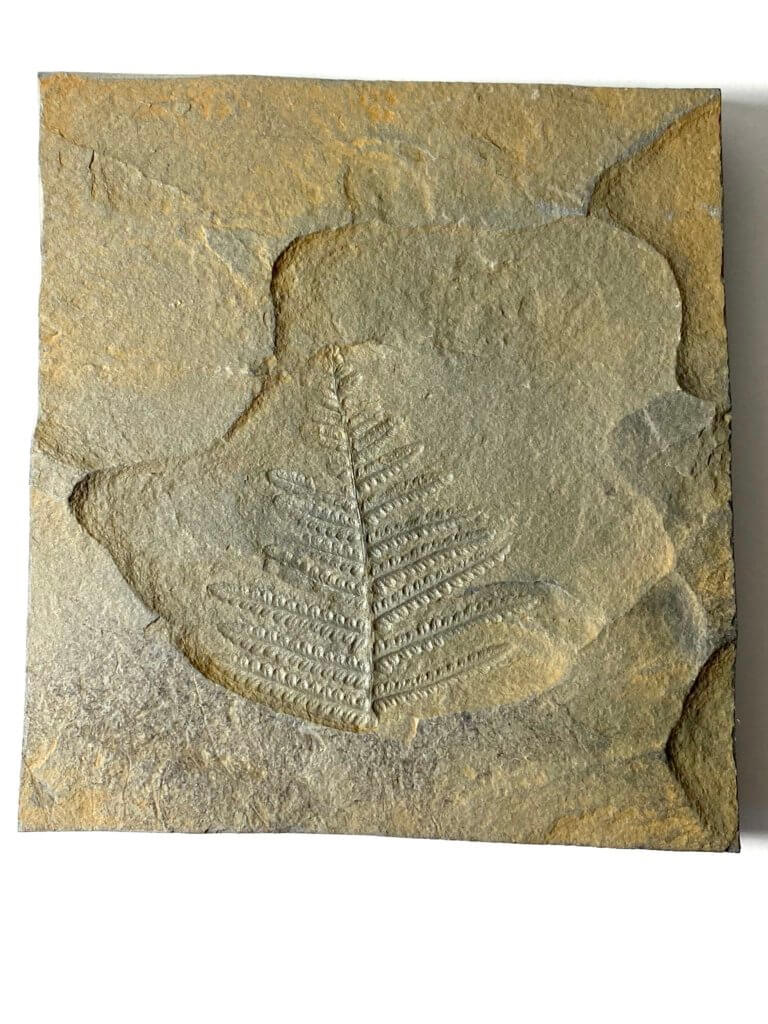There are plenty of shale plants to be found, in particular layers locally. Some have an abundance of ferns, stems, leaves, etc, and often you’ll fine a nice isolated piece. This is a two part post about two particularly interesting finds. One is very easy to identify, the other I am not completely sure about yet.
Lets start with the easy to identify one.
Pecopteris End Leaf Fond
Catalog Number: CG-0093
Pecopteris comes from a tree fern named Psaronius. It’s odd that certain parts of the plant have their own genus and species name. I imagine the parts were found first and later the wholes were given unique names. Often preserved pieces of bark, branches and leaves are found detached, and over time the puzzle is put back together.
Throughout history though, this has happened a number of times when it comes to naming fossils. Petalodus has several distinct species in the genus, but many of these are now thought to be different teeth from different portions of the jaw.

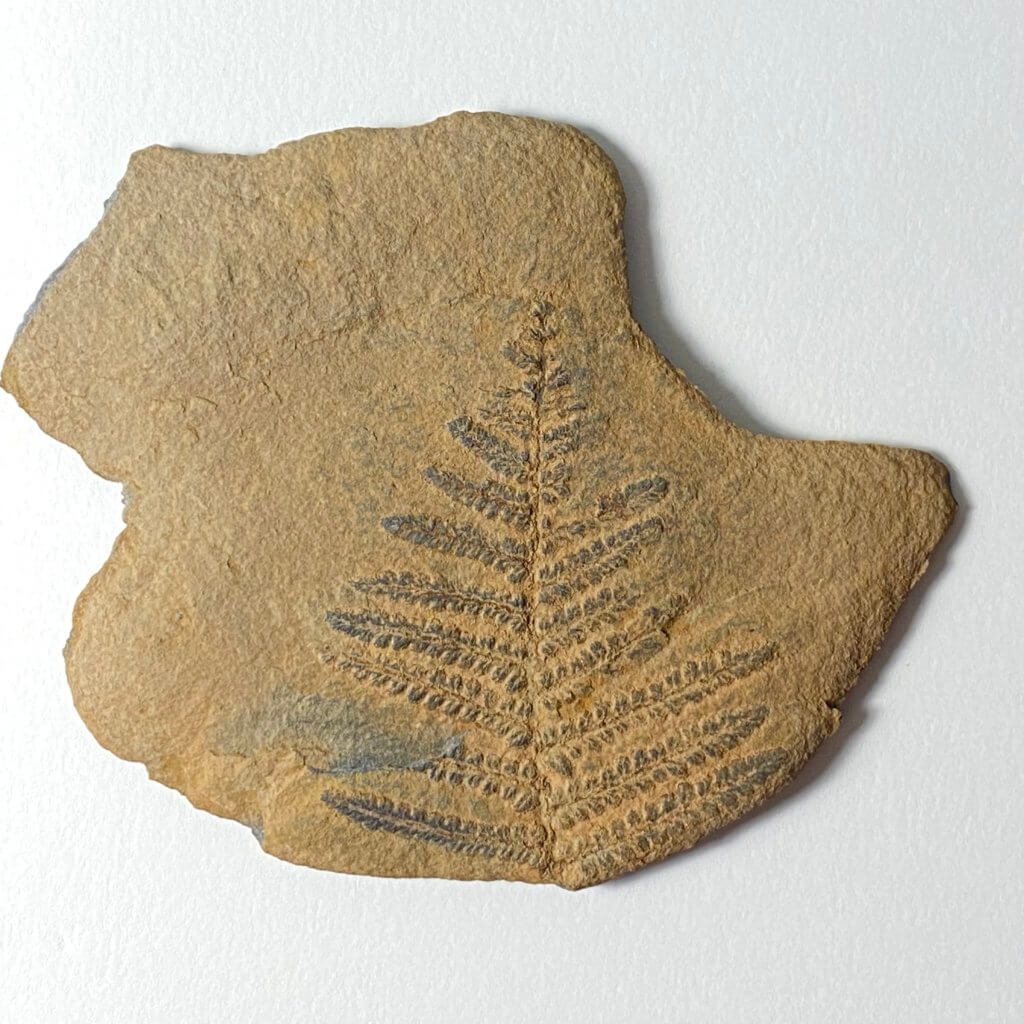
Gallery of Pecopteris specimen
This was revealed within one large piece of shale that was sitting in the stream. Upon splitting, this solitary piece was exposed. The positive piece was only loosely attached and it simply fell off. I had to cut the negative piece in the field to avoid breaking it or having to carry back a large piece.
Lepidodendron Leaf Perhaps?
This one is a bit of a mystery. It has a classic stem appearance that these leaves presented. It’s the discolored outline shape around it that is odd. It’s also backwards compared to what I would assume preserved leaf material would have, as the wider end appears near what would be a stem attachment.
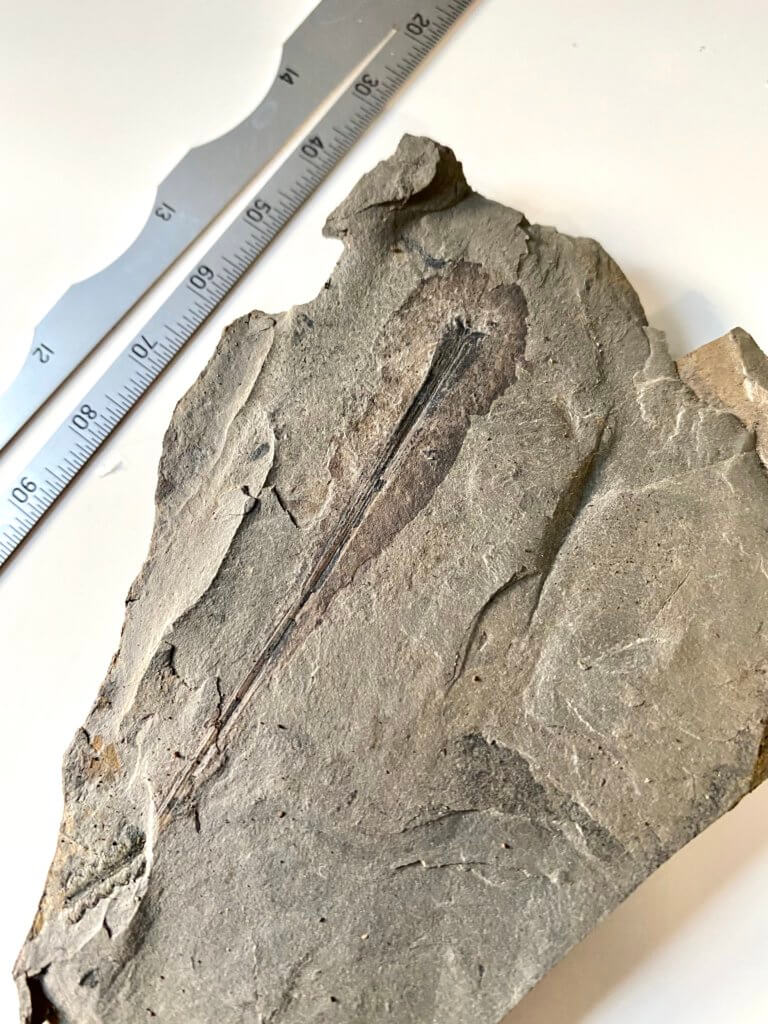
The above photo shows what I believe is the negative side. The end comes to an interesting T shape, which looks like where it attached to the parent plant. After some discussion about what it could be, I went back and retried the other side.
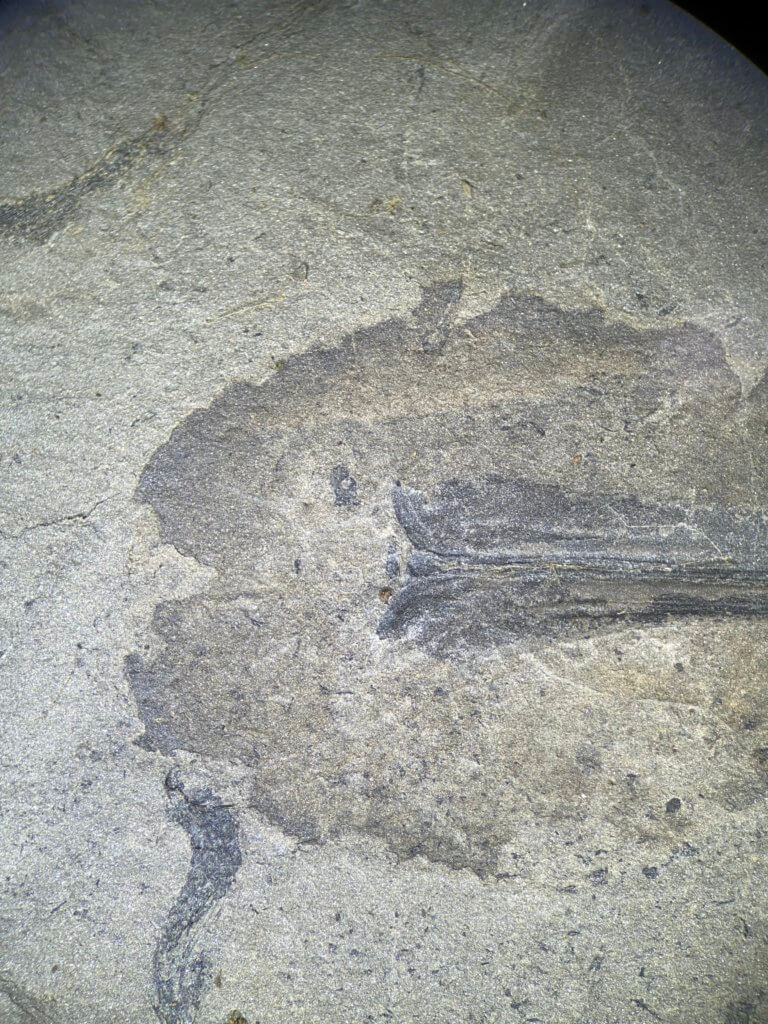
This article is still in progress. More to come!

